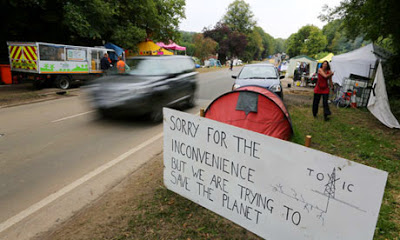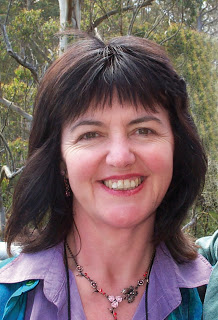It’s a quick one-two punch this week. Later we’ll hear from the and only Albert Bates
on the wonder of biochar and how it might save the world climate. But first, an Australian expert explains how humans die off in a hotter world.
Download/listen to this Radio Ecoshock show 131127 in CD Quality (56 MB) or
Lo-Fi (14 MB)
HOW WILL OUR ECONOMY COPE WHEN IT’S TOO HOT TO WORK OUTSIDE?
For example, people dream of moving to tropical Darwin in Northern Australia. Some do, but then move back when they can’t handle heat and humidity. With even Melbourne suburbs hitting almost 50 degrees C. – what will happen to Australia when the world warms more than 2 degrees C? What about Spain, or the Southern U.S.?
Dr. Elizabeth Hanna ANU
Here to help us is Dr. Elizabeth Hanna. She’s a nurse with a doctorate, and National
Convenor of the Climate Change Adaptation Research Network for Human Health, at Australian National University.
Some scientists, and authorities like the International Energy Agency, warn humanity
is headed for a world 3.5 degrees C. hotter in as little as 25 years. More is possible.
Hanna says a rise of 4 to 6 degrees C is “not compatible with human existence.”
Perhaps you think we will just turn up the air conditioner. But much of the world’s
work is done outside. Can humans cope with those kind of temperatures?
Did you know more Australians already die of heat than from automobile accidents? That in places like Darwin, 80% of violence, both male to male and domestic abuse, happens during hot, humid spells?
Big corporations talk a lot about worker productivity. Worker safety – not so much. The military found out the hard way (through dead troops) the limits to exercise in heat. But miners, farmers, electric system workers, and even public nurses are under threat during heat waves.
Hospital admissions soar during heat waves. You may not even realize you are approaching a fatal event, as dehydration lowers intellectual judgement. Learn what the limits are in this Radio Ecoshock interview, done while Dr. Hanna was in Warsaw at the COP 19 climate talks.
Download/listen to this 20 minute interview with Dr. Hanna in CD Quality or Lo-Fi.
ALBERT BATES: BIOCHAR IS REAL – PLUS ECOVILLAGE UPDATE
From America’s original back-to-the-land, The Farm in Tennessee, this is alternative
guru Albert Bates. His keynote speech at the Bioneers Chicago Great Lakes 2013
conference was recorded for Radio Ecoshock by Kelly Pierce of the Chicago Independent Media Center.
Download/listen to this keynote address by Albert Bates in CD Quality or Lo-Fi
It’s hard to summarize this fine speech. It’s loaded with facts, insight and ideas.
One principal theme: the original inhabitants of South America had a more fully
developed civilization in the Amazon than we have been told. They used a type of agriculture which continually enriched the soil, instead of depleting it, as
European-style farming does.
This matters a lot. Albert explains the many benefits of biochar. That’s vegetative
material burned without oxygen. It forms a carbon that can last in the soil for hundreds of years.
Biochar, Albert explains, is porous – full of cavities which become enriched with fungi
and bacteria the ecosystem and our gardens require. Even more, if we made biochar in a large way, we could sequester massive amounts of carbon taken out of the atmosphere.
Even Dr. James Hansen has said biochar on a big scale could help delay or even avert the worst of climate change. The soil holds massive amounts of carbon.
We’ve been releasing it for thousands of years through our farming methods. We can recapture it by using the wisdom of the aboriginal people of the Amazon.
During his talk, Albert Bates also gives us an update on the astonishing growth of eco-villages around the world. There are thousands in Sri Lanka, more in Japan, the UK, Scandinavia, and of course North America. It’s almost enough to give a person hope.
Find out more about the many works of Albert Bates here.
WHAT ALBERT SHOWED IN A FILM
During the speech, Albert show a film which could not be broadcast. Here are my summary notes of the part of the presentation:
The film describes projects for soil nutrients. It begins with how to create a large “tea bag” to infuse water with super nutrients. First, the chlorine must be removed from the water. They bubble it for 24 hours, and then added a product called
“Micromate” from Mesa Verde which locks up any remaining chlorine.
They add things like different soils, worm castings, bat guanao. Soak the bag in water for 24 hours, trying to get at least 1/3 of bag contents to exit into water. They
added “fish hyrolosate“, ground up fish in a liquid form, as a micro-meal for fungi and bacteria. You can add kelp, or ground feathers (feathermeal). You can also use biochar, providing that is ground up very finely. After getting your liquid plant food out of teabag, plant the teabag in a compost pile or other area you want stimulated.
Albert also demonstrates an area torn up and compressed by a construction project. It was barren, full of gravel, and soil-less. They sprayed the compost tea, seeded grass and mulched that with straw. They got a lot of growth, in just one month.
The film further explored how to keep carbon in the ground, instead of releasing it as
a greenhouse gas. It “is agriculture that builds rather than mines the soil.”
HOT GARDEN TIP
Bates cautions against adding biochar straight into the garden. You might actually see a decrease in production the first year. Why? Because the biochar needs to fill up with fungi and bacteria – which are taken from the garden soil. It’s like a hotel for micro-nutrients.
The answer is to add you biochar to the compost pile, or a fallow area, for a year or
so. Then put that into the garden, for super results.
You won’t want to miss this important talk by Albert Bates!
WRAP UP
Don’t forget, you can download all our past programs as free mp3’s at our web site, ecoshock.org. You’ll also see information on how to support the program here.
I’m Alex. Thanks for listening.



Thanks for all your good work Alex. This program, like so many others you've done, was really eye opening, and incredibly informative.